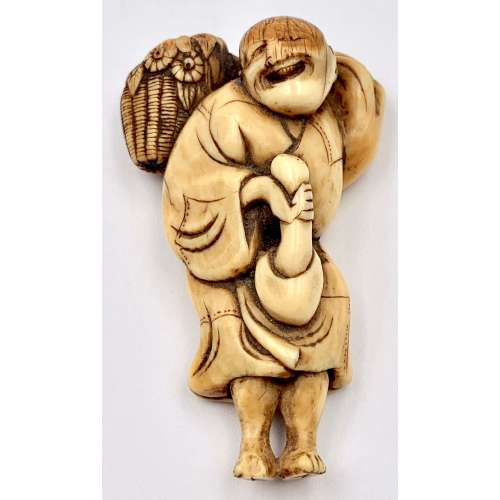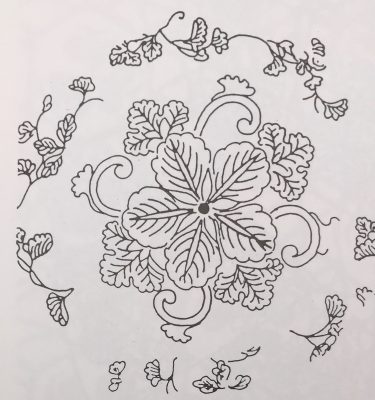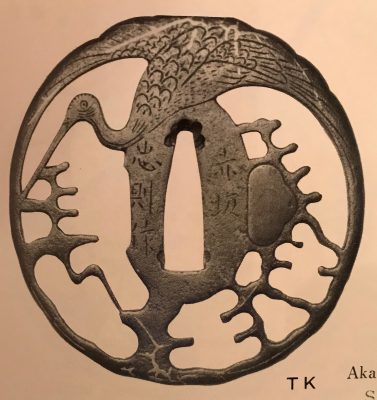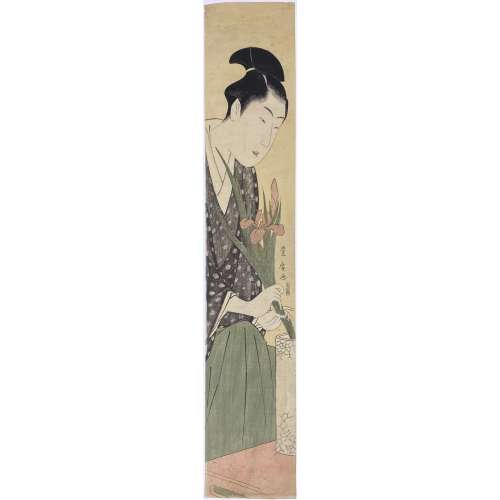Netsuke with a design of a laughing peasant carrying a basket and holding a giant mushroom in his right hand.
18th century Dimensions: 55.7 mm tallUnsigned. According to Merrily Baird (Symbols of Japan, page. 93): ... This prominent use in the symbol-rich netsuke art form, however, reflects more their sexual symbolism than either their dietary appeal or interesting shapes. Mushrooms in Japan are generally a symbol of fertility, with some flat varieties, like shiitake, being associated with females. In contrast, the matsutake mushroom (Armillaria edodes) is a phallic symbol, as befits its thick, spearlike stem and the fact that it is consumed before cap opens.

Female Daruma Riding a Mushroom [女達磨]. Ippitsusai Bunchô (1765–1792). MFA impressions: 11.18513, 21.4758
































 Sano Jirōzaemon [佐野次郎左衛門] – provincial commoner who killed a famous
Sano Jirōzaemon [佐野次郎左衛門] – provincial commoner who killed a famous 

 One more example can be seen at the two upper images in Waseda University Cultural Resources Database, №
One more example can be seen at the two upper images in Waseda University Cultural Resources Database, № 






